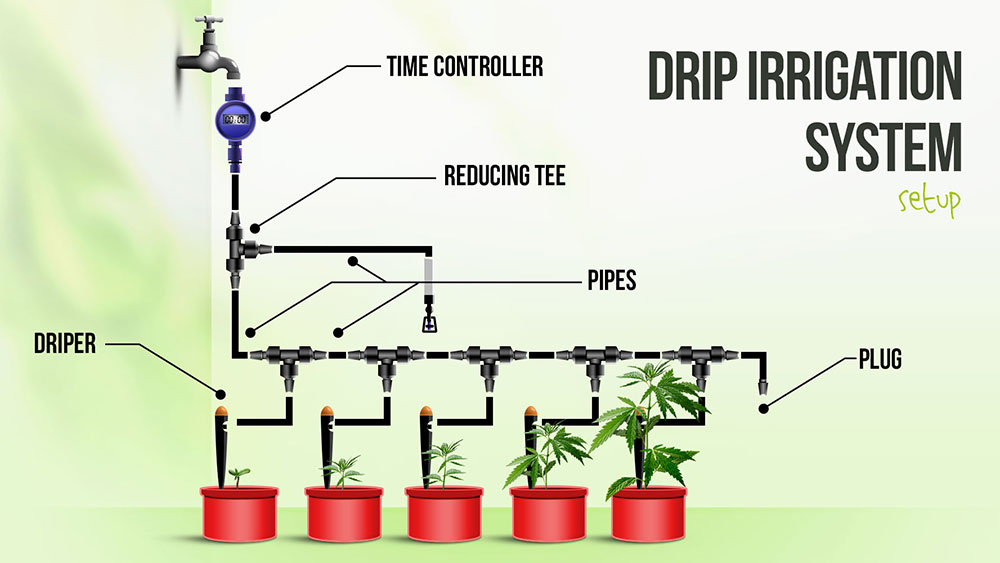
Do It Yourself Drip Irrigation System Make A Drip Irrigation System Tinker Crate Youtube
Drip, or micro-irrigation, technology uses a network of plastic pipes to carry a low flow of water under low pressure to plants. Water is applied much more slowly than with sprinkler irrigation. Drip irrigation exceeds 90 percent efficiency whereas sprinkler systems are 50 to 70 percent efficient. It is so efficient that many water utilities.

How To Design A Home Sprinkler System / How to Layout an Underground Irrigation System Orbit
Tip #4. Ensure Your Water Source Is Uphill To maintain optimal function of your drip irrigation system, it is much better to use a water source that is at the highest elevation of your slope. This will ensure the system isn't trying to work against gravity. Then, you can easily run your ½" emitter tubing downhill. Tip #5.

5 Tips For Planning A Drip Irrigation System AGCO FarmLife
Drip irrigation or trickle irrigation is a type of micro-irrigation system that has the potential to save water and nutrients by allowing water to drip slowly to the roots of plants, either from above the soil surface or buried below the surface. The goal is to place water directly into the root zone and minimize evaporation.

Diy Drip Irrigation For Vegetable Garden / Drip Irrigation For Raised Bed Gardens Organic
Drip irrigation offers many benefits. Because it places a precise amount of water where you want it, it saves water and money while discouraging the growth of weeds.

Typical Drip System Layout Irrigation Hydrology
Attach 24-volt sprinkler wire to the solenoid on each valve (the cylindrical part at the top that opens and closes the valve electronically) using weatherproof wire nuts. Run the sprinkler wire to the timer and connect each wire to the corresponding terminal inside the timer. Thread a drip filter onto the outlet of each valve.

Typical Layouts Support Materials Netafim Garden irrigation system, Irrigation system
1 Check legal requirements. Before you begin, contact your water purveyor or municipal water department to ask about laws, codes, and permits related to drip irrigation systems. Each area and water purveyor may have its own requirements, and some require a licensed irrigator and/or backflow tester to be present during the installation.

Landscape & Lawn Drip Irrigation Design Layouts Drip irrigation diy, Drip irrigation system
Step 1 Where to Buy Drip Irrigation Systems You can find kits and individual components online and at home centers, garden centers and plumbing suppliers. A basic kit that waters up to 20 containers or a 75-sq.-ft. area costs $25 to $50 and comes with everything you need except the timer. Higher quality kits may cost $70 or more. Step 2
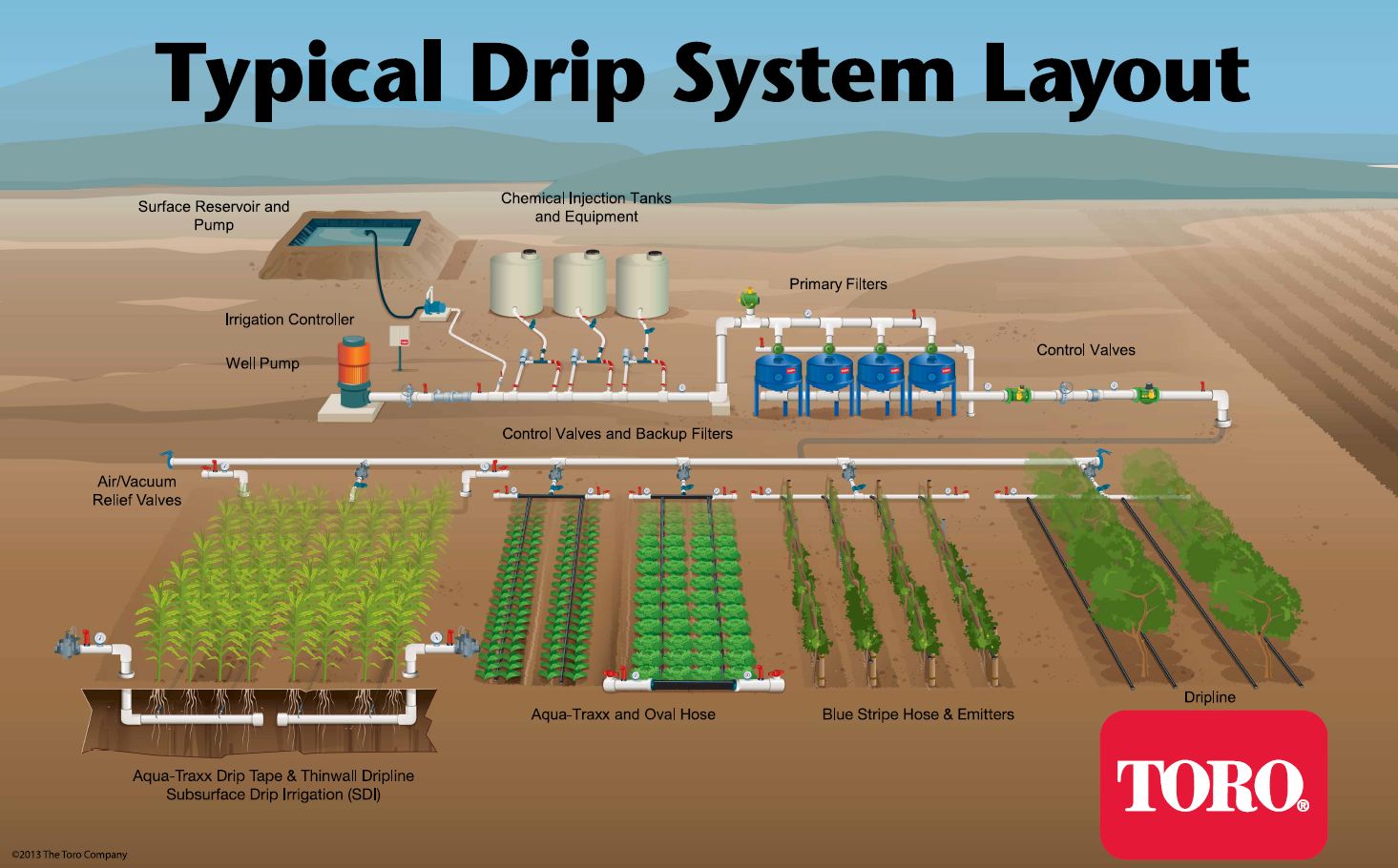
Typical Drip Irrigation System Layout
The videos below will take you through the basics of drip irrigation -- including how a drip irrigation system works, the different types of components used in a drip system, and how to select the right spot watering devices.
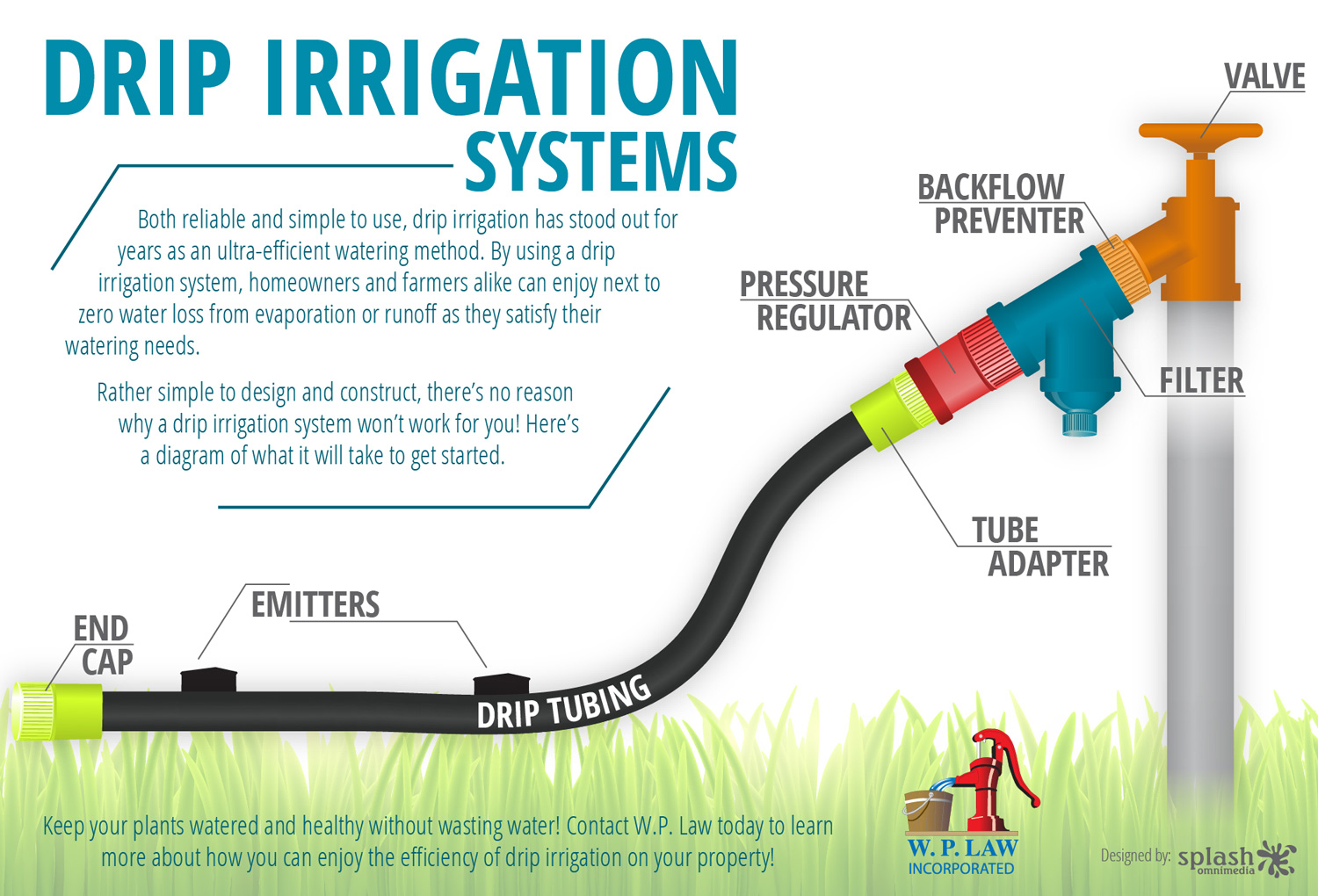
DripIrrigationSystemBreakdown HACHI Nông Nghiệp Thông Minh
This guide covers the basics of design, installation, and maintenance for Rain Bird's XF Series Dripline. Included are design steps, technical data, installation layouts and design details to assist in the design of the more common dripline applications. Use of dripline is a preferred method in many low-volume irrigation applications.

Getting Started With Drip System Hydroponics 8 Things You Need To Know
Onto shrubs and trees. Here we'll place two emitters, the one gallon per hour type, twelve inches from the base of each tree and shrub five feet or shorter. A shrub taller than five feet should have three one-gallon emitters. A tree between 5 and 10 feet in height will need two to three 2-gallon emitters.
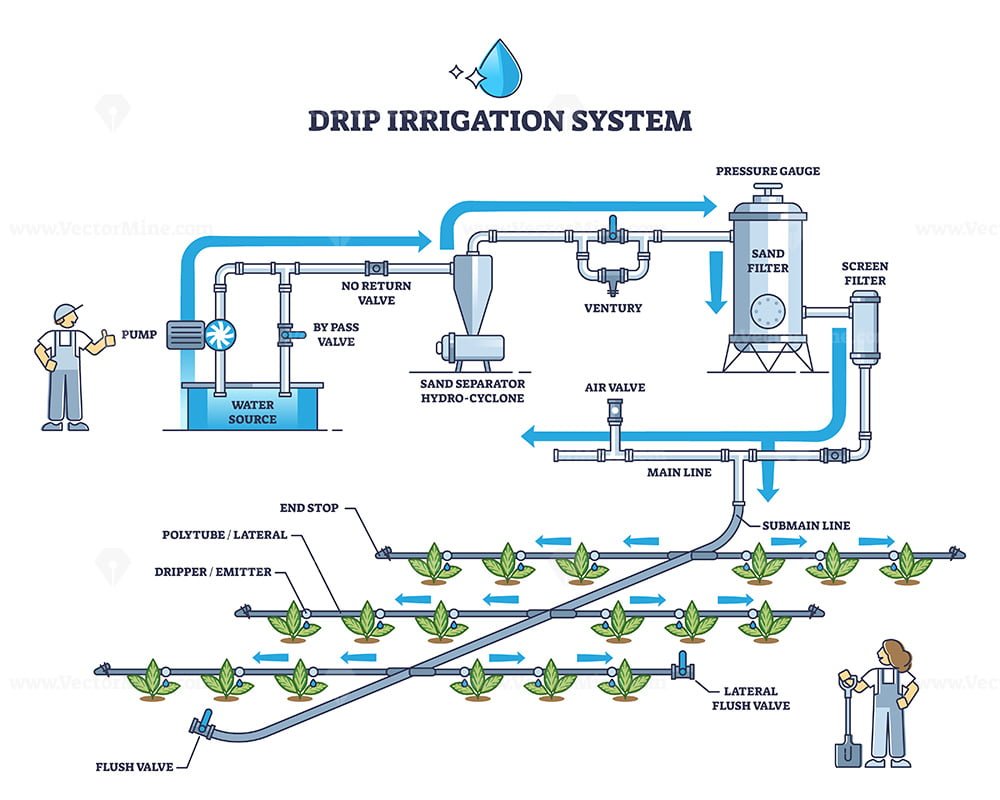
Drip irrigation system and automatic ground watering pipeline outline diagram VectorMine
1 Lay Out Irrigation Grid Drip irrigation prevents overwatering. The system consists of interconnected drip irrigation tools such as emitters, hoses and valves. An emitter will consistently provide water to a plant's roots. Laying these tools out correctly will give the best results. Your grid plan will consist primarily of hoses and emitters.

Drip Irrigation For Increased Vegetable Production Graduate Farmer
The "Typical Drip Irrigation Layout" illustration has been developed to help those who are unfamiliar with drip irrigation understand basic drip irrigation system components and concepts. The drip irrigation layout illustration is organized into two halves. First, the "headworks" portion of a drip irrigation system shows the typical water sources, pumps, filters, chemical injection.

3 Main components of the drip irrigation system. Download Scientific Diagram
Handy diagrams on setting up your drip irrigation system from the hose bib to the lines. Skip to content Quality Seeds, Plants and Growing Supplies Since 1976

Best Hydroponic Drip System Ultimate Guide {Updated 2021} Small Scale Gardener
Drip Irrigation, also commonly referred to as micro-irrigation, trickle irrigation, low volume irrigation or xerigation. This is a method of irrigation which eficiently delivers water to the soil surface or the root zone; this is done by having water drip slowly from emission devices, most commonly called "drip emitters" or "drippers".
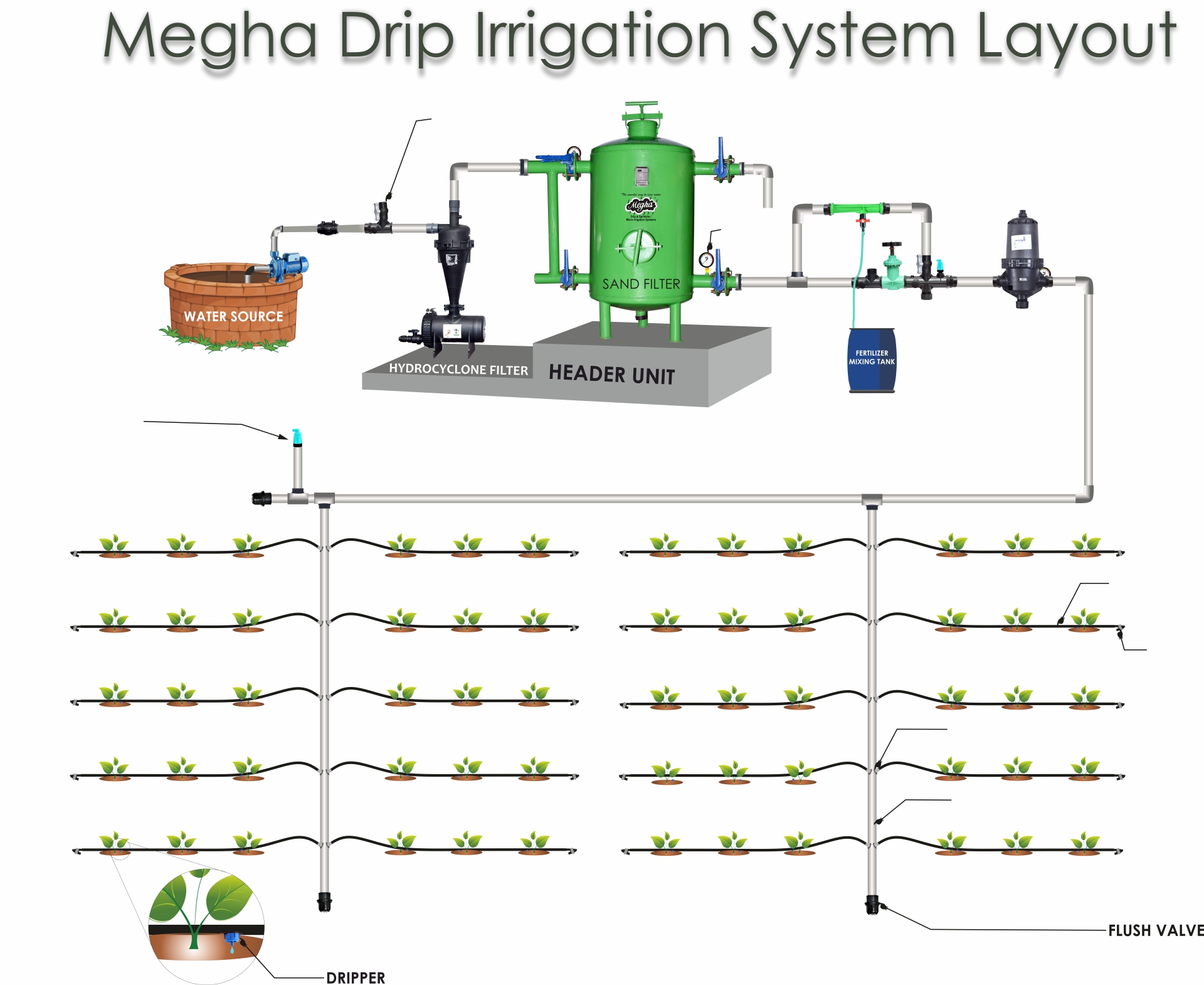
Drip Irrigation Megha Agrotech
• Netafim is the world leader in drip irrigation. Since 1965 Netafim has pioneered the science of subsurface, on-surface and point source drip irrigation and manufacturing. Serving more than 80 countries worldwide, sales in 2003 will approach $300 million. • Techline DL has been used successfully in landscape since 1987 in North America.

What Is Drip Hydroponics? NoSoilSolutions
Drip irrigation is the most efficient way to irrigate your raised garden beds, orchard, landscape, roses, shrubs, row crops, or even containers on a deck or patio. Setting a system up and putting it on a timer eliminates hours of hand watering and weeding as all the water goes directly to the desired plant's roots.